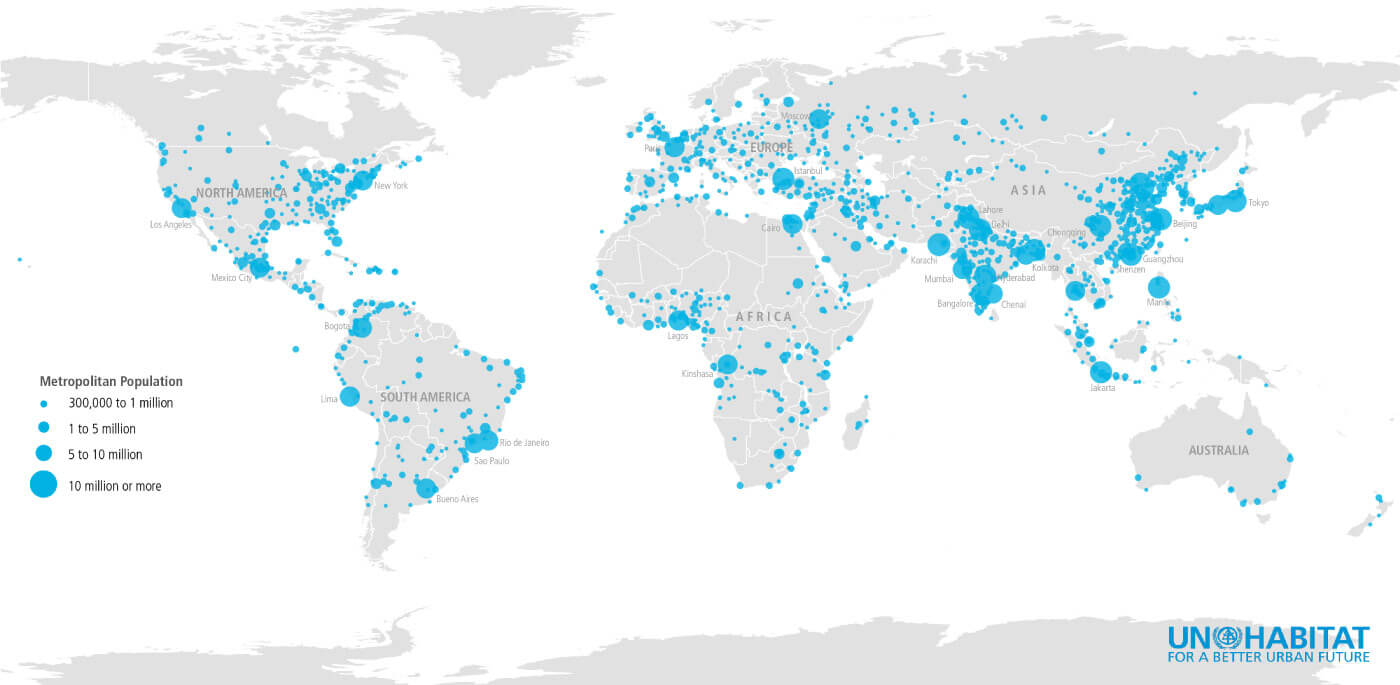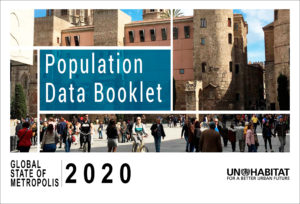Global State of Metropolis | 2020
In 2020 there are 1934 metropolises with more than 300,000 inhabitants representing approximately 60% of the world’s urban population. At least 2.59 billion people live in metropolises in 2020 which is equivalent to one third of the global population. 34 metropolises have surpassed 10 million inhabitants; while 51 have a population of 5 to 10 million; 494 of 1 to 5 million; and 1355 of 300,000 to 1 million. It is projected that the number of people living in metropolises in 2035 will increase to 3.47 billion representing 39% of the global population and 62.5% of the world’s urban population. Almost 1 billion people will become metropolitan inhabitants in the next fifteen years. A new metropolis will arise every two-weeks in the next fifteen years for a total of 429 new metropolises.

Metropolises with 300,000 inhabitants or more in 2020. Source: UN-Habitat, 2020.

Global State of Metropolis 2020 – Population Data Booklet
The UN-Habitat Metropolitan Data Booklet contains the first global database of metropolises built on the 2018 Revision of the United Nations World Urbanization Prospects. It features new information for better understanding of recent and future metropolitan dynamics and offers a comparative analysis on metropolitan numbers and figures in global regions. The Booklet is a contribution to the forthcoming Global State of Metropolis Report currently be prepared by UN-Habitat, which will look at the current state of metropolitan areas and identify the major challenges of metropolitan management in terms of policies and legislation, planning, governance, and finance.
READING MATERIALS
- Read here the press release on the Global State of Metropolis 2020 – Population Data Booklet!
- Download here the brochure of the Global State of Metropolis!
- Download the UN-Habitat Global Database of Metropolises 2020!
- Download here the report of the Abu Dhabi’s EGM on the Global State of Metropolis!
- Download here the report of the Medellin’s EGM on the Global State of Metropolis!

